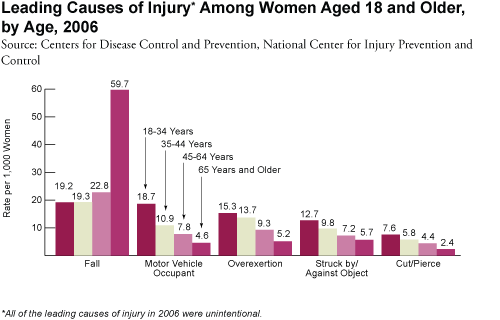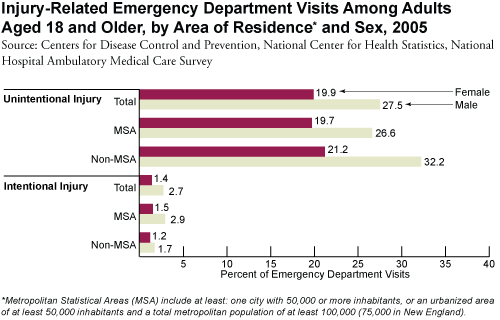Below is a 2010 list of Women's groups across Canada funded by a very sexist government. (They are all the same across Canada, however). Although I find the Tories the lesser of the panderers in federal politics they clearly indulge, as did the Liberals, the female vote with questionable handouts. Note the YWCA gets funding despite their political campaigns against the gun registry. Note the number of female only ethnic groups being funded. One would think we would only allow into the country those who are going to be self sufficient and bring skill sets that will be productive, or we would expect their direct and extended family to undertake this charitable work.
I note the Alberta Council of Women's Shelters (ACWS), gets money. Is this where their Chief Propagandist, Jan Reimer gets her pay cheque?
The government list: Women's groups that ARE funded
- May 6, 2010 10:19 AM | Comments8Recommend9
- By Karina Roman
Today Chris Hilton, the minister's director of communications, sent us the list of those 78 projects/groups (which were chosen from a record 486 proposals, according to the government.) This list is by province and territory and there is no indication of how much money is attached to each project (although we will attempt to find that out). There is also no information on what the projects are specifically about (although some seem obvious), but I'm sure a little digging will bring us those nuggets as well.
This list comes after the opposition accused the government of cutting funding to groups that do not share the Conservative's ideology. The Liberals, for example, issued their own selective list yesterday.
Here is the government's list for readers to peruse:
(* Indicates new groups that have been approved for funding.)
Newfoundland and Labrador
* Réseau de développement économique et d'employabilitéde Terre-Neuve-et-Labrador (RDÉE TNL)Projet d'entreprenariat pour les femmes de l'Ouest du Labrador
Newfoundland Aboriginal Women's Network (NAWN)
Empowering Aboriginal Women; Influencing Community Wellness
Multicultural Women's Organization of Newfoundland and Labrador
A Culturally Appropriate Gendered Approach to Improving Immigrant Women and Girls Economic Security Through Leadership Skill Development
Nova Scotia
Fédération des femmes acadiennes de la Nouvelle-ÉcosseLa violence, ça suffit!
The Hypatia Association
Tools for the Trade: Promoting Economic Security for Women in Cape Breton
New Brunswick
Association acadienne et francophone des aînées et aînés du Nouveau-Brunswick
Éveil à l'exercice de la citoyenneté des femmes et comment l'exercer
Centre de prévention de la violence familiale de Kent
Notre destin notre autodetermination
*Partners For Youth Inc.
Building Opportunity - Leadership Development for Young Women to Eliminate Relationship Violence
Urban Core Support Network Saint John Inc.
POWER UP! Mentoring
Prince Edward Island
PEI Coalition for Women in Government Inc.
Supporting Democratic Participation of Prince Edward Island's Women and Girls
Women's Network PEI Inc.
Trade Herizons
Quebec & Nunavut
Centre d'intégration au marché du l'emploi (CIME)
Les femmes dans la construction: une voie d'avenir pour un secteur en effervescence
Centre social d'aide aux immigrants
Favoriser la participation et la représentation des femmes immigrantes et réfugiées dans le quartier Ville-Émard / Côte-Saint-Paul
Femmes et politique municipale de l'Estrie
Ensemble, continuons!
*Fripe.com
En route vers le marché du travail
*Groupe d'entraide L'expression libre du Haut-Richelieu
Réseau de soutien et d'entraide pour femmes victimes d'agressions sexuelles
*Le Cran des Femmes
Onward Together!
*Regroupement des femmes d'affaires et femmes professionnnelles de la region de Thetford
Influence et pouvoir au feminin
Relais-femmes
Pour que les femmes continuent d'avancer
Réseau des femmes des Laurentides
Citoyennes, faites vos marques!
*Saturviit Inuit Women's Association of Nunavik
Governance Training for Inuit Women in Nunavik
*Table de concertation des organismes au service des personnes réfugiées et immigrantes Inc. (TCRI)
Améliorons nos conditions de vie : en route vers le développement du leadership des femmes immigrées!
Wapikoni Mobile Corporation
Soirées de filles: de l'intime au collectif
Ontario
Action Ontarienne contre la violence faite aux femmes
Tools to increase safety
*Agincourt Community Services Association
Forced Marriage - Education and Empowerment
*Biminaawzogin Regional Aboriginal Women's Circle
Women's Transition Bridging Project
*Catholic Family Services Toronto
Women Helping Women
*Community Living Peterborough
Young Women's Leadership Group
Community Opportunity and Innovation Network (COIN)
Women Leading, Women Learning, Women Working
*Cornwall and District Immigrant Services Agency
From Learning to Earning Women (FLEW) - A Program for Immigrant Women by Women
*Elizabeth Fry Society Sudbury
EMPOWER (Education Making Positive Outcomes within Everyone's Reach)
*Eritrean Canadian Community Centre of Metropolitan Toronto
Empowering African Immigrant Women to Become Leaders in Raising Sexually Healthy Children
Focus for Ethnic Women
Immigrant Women and Voice
*Girls Incorporated of Limestone, Algonquin and Lakeshore (Girls Inc. Limestone)
Girls Inc. Mother's Network
*Korean Canadian Women's Association (KCWA) Family and Social Services
FEM (Free and Empower Me)
Lowertown Community Resource Centre - trustee of the City for All Women Initiative
Engaging Diverse Communities through Facilitation
*London Urban Services Organization Centre (LUSO Community Services)
D.A.M.E.S. (Daughters and Mothers Experiencing Success)
Media Action (National Watch on Images of Women in the Media)
Informed Opinions
*Mouvement Ontarien des femmes immigrantes francophones (MOFIF)
Viser haut
*MUJER- Latin American Women's Organization
Empower Youth Latinas in Toronto
*My Friends House, Collingwood Crisis Centre
"Next Door" Transitional Support Program for Women
*Oasis centre des femmes
Developing an Economic Hub for Language
PARO Centre for Women's Enterprise
SUPPLEMENT: Women's Access Project
Reh'ma Community Services
Shifting Burdens and Empowering Women
*Sault Sainte Marie Indian Friendship Centre
Jingle Dress Regalia Making Project
*The Multicultural Council of Windsor and Essex County
Leadership 360
The Redwood for Women and Children Fleeing Abuse
Women on the Move, Phase 2
*Urban Alliance on Race Relations
Making Noise Media and Accountability Project
National
Federation of Canadian Municipalities
National Women in Municipal Government Program
Girls Action Foundation
Young Women: Learning and Leading for Change
Girl Guides of Canada/ Guides du Canada (GGC)
SUPPLEMENT: Girls for Safer Communities
National Initiative for Care of the Elderly (NICE)
Older Women and Financial Literacy: Bridging the Income Gap
Native Women's Association of Canada
Evidence to Action
Manitoba
Association for Community Living - Winnipeg Inc.
Women in Harm's Way - Addressing the Silent Abuse - Phase 2
Ka Ni Kanichihk
Aboriginal Women & Youth - Reclaiming our Power
West Central Women's Resource Centre
Cultivating Holistic Community Leadership
*Women's Enterprise Centre of Manitoba
WEC-Tech Project
Saskatchewan
*Daughters of Africa International
African Women in the Community
Elizabeth Fry Society of Saskatchewan
Strong Sisters
*La Ronge Native Women's Council
Piwapan Sexual Assault Program
Provincial Association of Transition Houses and Services of Saskatchewan
Modeling and Mentoring: Creating the Supportive and Effective Relationships that Lead to Non-Violent Communities
Saskatchewan Towards Offering Partnership Solutions (STOPS) to Violence
The Community Connections Plan Phase 2: A Consistent, Coordinated, Effective Response to Violence and Abuse
Alberta
Alberta Council of Women's Shelters (ACWS)
Changing Lives: Empowering Women through Enhanced Shelter Practices
Canadian Mental Health Association
Community Development for Sexual Assault Response Services in Southeast Alberta
Changing Together: Centre for Immigrant Women Association
The Silkworm Project: An emergency shelter designed specifically for Immigrant women
Edmonton Mennonite Centre for Newcomers (EMCN)
Immigrant Women Claiming their Future: Building Capacity through the Sustainable Livehood Model
Immigrant Services Calgary Society
Integrated Women's Mentorship: Phase II
United Cultures of Canada Association
Enhancing Community Response to Support Victims and End Domestic Violence
*Westlock Women's Association
Stop the Violence - Pilot Project
British Columbia
*Cridge Centre for the Family
The Cridge Asset Building Project
*Minerva Foundation for BC Women
Women Leading the Way Project
Supporting Women's Alternatives Network (SWAN Vancouver)
Preventing Violence by Protecting Rights
SWOVA Community Development and Research Society
Pass It On: Women and Girls Working Together for Safety, Phase II
Salvation Army, The Governing Council
Female Lone Parent Family Breakthrough
*New Hope Community Services Society
Woman to Woman: Empowering Refugee and Immigrant Women to Stand Strong in Canada Through Mentoring
WISH Drop-In Centre Society
Peer Security Project: Phase Two
*Women's Enterprise Centre
Taking the Stage: Leadership Skills Training targeting Aboriginal, Immigrant and Entrepreneur Women in BC
Yukon
Les EssentiElles (fiscal agent for the Yukon Status of Women Council)
Financial Literacy for Yukon Women
Les EssentiElles
Renforcement PluriElles
Northwest Territories
YWCA of Yellowknife, NWT
Increasing Safety for Women in NWT Communities
http://www.cbc.ca/politics/insidepolitics/2010/05/the-government-list-womens-groups-that-are-funded.html#socialcomments








